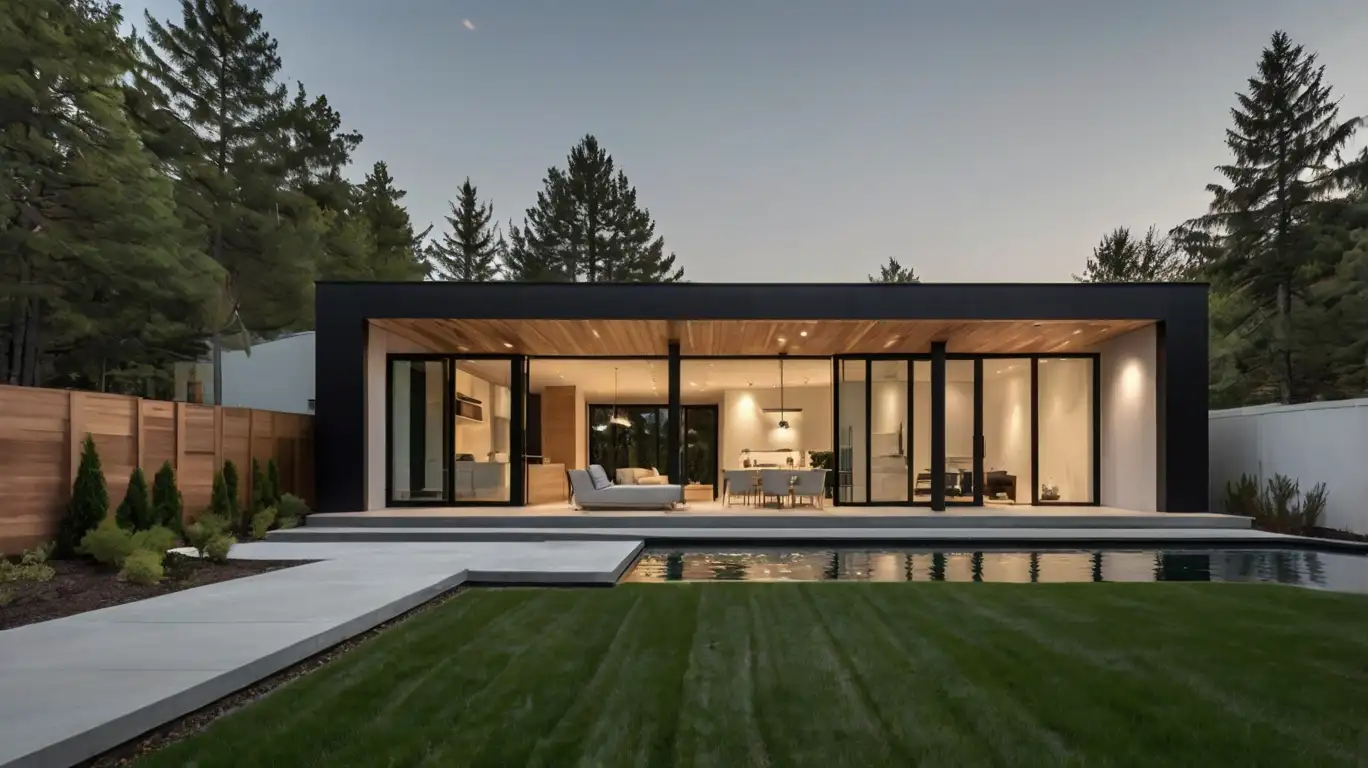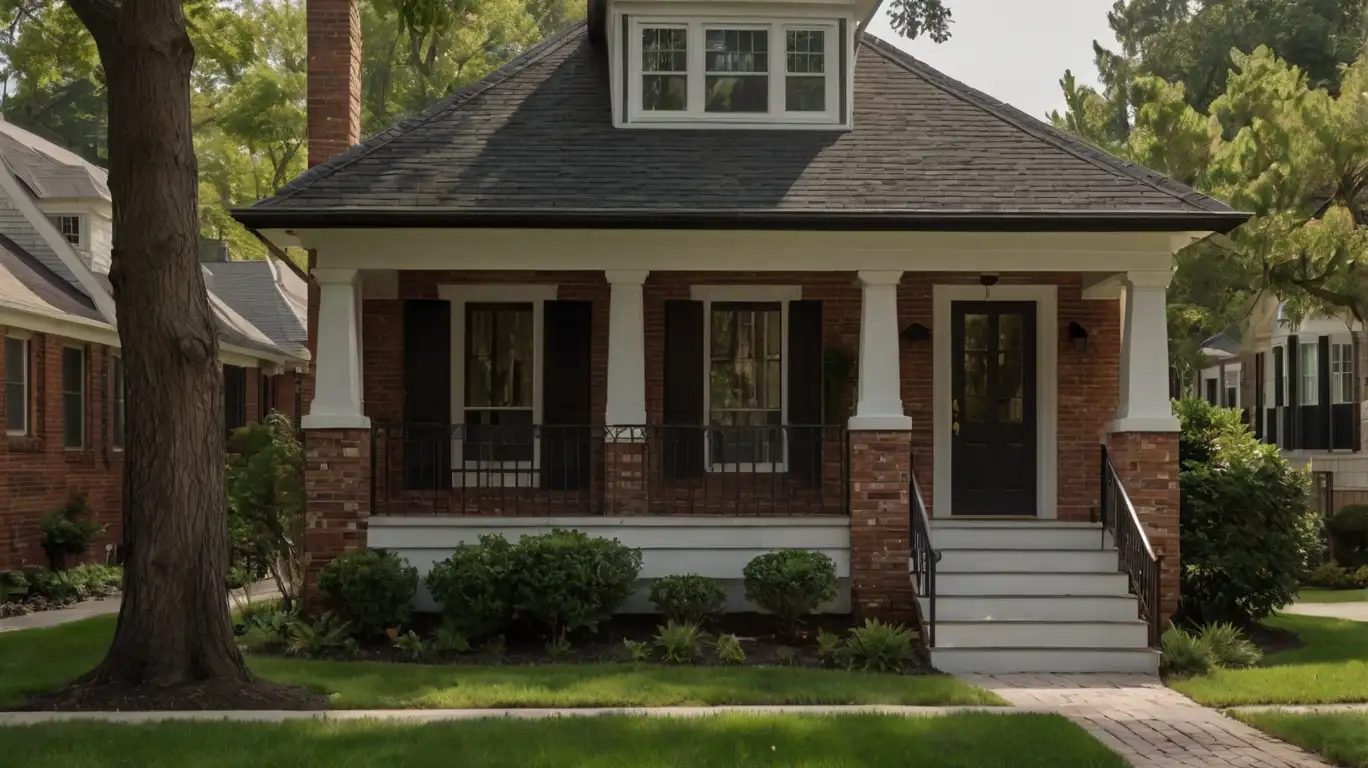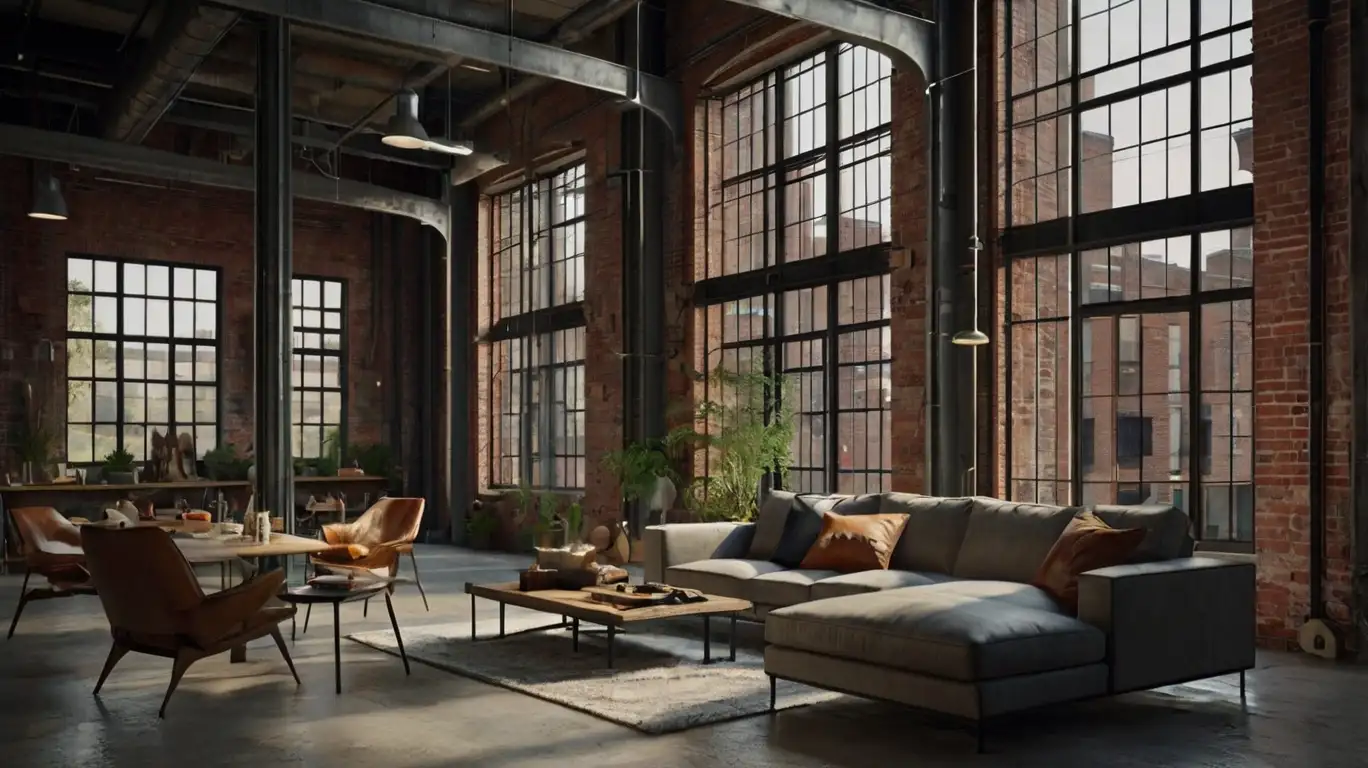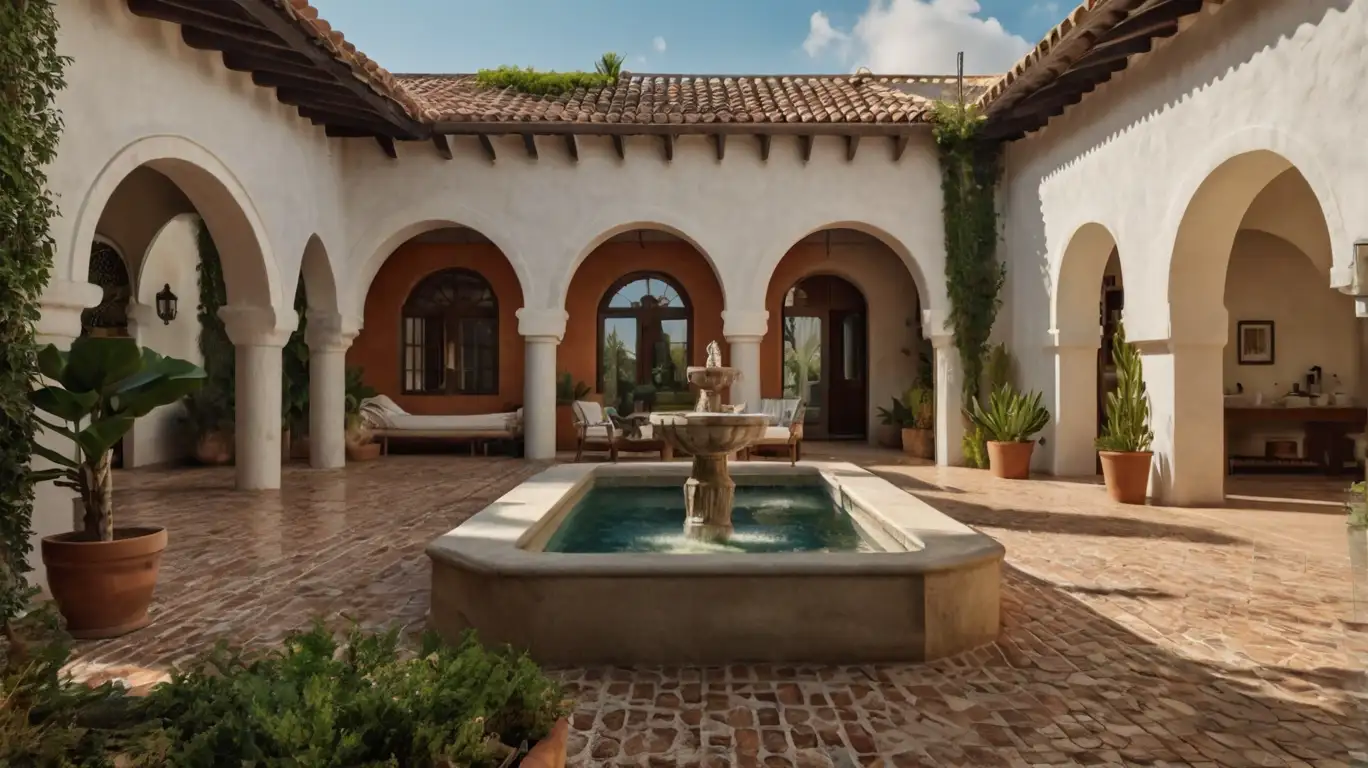Imagine walking into a home that feels just right—spacious, stylish, and perfect for your family. That’s what a well-designed 4-bedroom duplex can offer.
Modern 4-bedroom duplexes have evolved beyond simple two-unit structures into sophisticated living spaces that combine functionality with aesthetic appeal.
In this comprehensive guide, we’ll explore five popular styles that can transform your duplex into a cozy and functional space, examining their unique characteristics, advantages, and ideal resident profiles.
Modern Minimalist

The modern minimalist style has gained significant traction in recent years, particularly in urban settings. Here’s why this architectural approach continues to dominate the market:
Clean lines: The absence of ornate decorations creates a sense of order and calm. Straight edges and geometric shapes define spaces without overwhelming them. Features like flush cabinets, handleless drawers, and hidden storage solutions contribute to the streamlined appearance.
Neutral colors: The color palette typically consists of whites, grays, and blacks, creating a sophisticated backdrop. Strategic pops of color through artwork or furniture can add personality without compromising the minimalist aesthetic. Many designers recommend the 60-30-10 rule: 60% dominant neutral color, 30% secondary neutral, and 10% accent color.
Open spaces: The floor plan minimizes internal walls, creating flowing spaces that serve multiple purposes. This design choice improves natural light distribution and facilitates better family interaction. Common areas often blend seamlessly, with subtle transitions between living, dining, and kitchen spaces.
Natural light: Large windows, often floor-to-ceiling, maximize daylight penetration. Strategic window placement considers sun patterns throughout the day, reducing energy consumption while creating bright, and welcoming spaces. Many modern minimalist designs incorporate sliding glass doors that open to outdoor areas, further expanding the living space.
This style particularly appeals to urban professionals and small families who appreciate efficient space utilization and low-maintenance living. The emphasis on functionality makes it ideal for busy households seeking organized, clutter-free environments.
Contemporary

Contemporary style represents the current design trends while maintaining flexibility for future adaptations. Its distinctive features include:
Asymmetrical designs: The intentional use of irregular shapes and unexpected angles creates visual interest. These designs often incorporate cantilevers, unique roof lines, and varied ceiling heights to add architectural drama.
Mixed materials: The harmonious combination of wood, metal, stone, and glass creates textural depth.
Modern materials like engineered wood, composite panels, and recycled materials often feature prominently, reflecting current sustainability trends. The interplay of different textures adds visual interest while maintaining functionality.
Smart home technology: Contemporary homes embrace cutting-edge technology. Beyond basic lighting and temperature control, modern systems integrate security, entertainment, and energy management. Features might include:
- Voice-controlled home automation
- Smart appliances with remote monitoring
- Energy consumption optimization systems
- Integrated entertainment systems
- Advanced security with mobile notifications
This style suits tech-savvy families who value innovation and adaptability. The integration of modern conveniences with striking design elements creates a living space that’s both practical and impressive.
Traditional

Traditional style embodies timeless elegance with proven design principles:
Symmetrical layouts: The balanced arrangement of spaces creates a sense of order and harmony. This symmetry extends to window placement, room arrangements, and even landscape design. The result is a visually pleasing and psychologically comforting environment.
Classic materials: High-quality materials like brick, natural wood, and stone form the foundation of traditional design. These materials often feature detailed craftsmanship, such as:
- Crown molding and wainscoting
- Hardwood flooring with intricate patterns
- Custom millwork around windows and doors
- Natural stone fireplaces as focal points
Formal spaces: Dedicated areas for entertaining maintain a sense of sophistication. Formal living rooms, dining rooms, and foyers are designed for hosting guests while maintaining family privacy. These spaces often feature higher ceilings and more elaborate decorative elements.
This style appeals to families who value established design principles and appreciate refined aesthetics. It’s particularly suitable for those who frequently entertain or enjoy maintaining cultural traditions.
Industrial

The industrial style celebrates architectural honesty and raw materials:
Exposed brick walls: Original or recreated brick surfaces add character and texture. These walls often feature preserved imperfections that tell a story and create visual interest. The variation in brick colors and patterns adds warmth to the space.
Metal beams: Structural elements become design features, highlighting the building’s construction. Steel beams, ductwork, and pipes are often painted or treated to prevent rust while maintaining their industrial appearance. These elements can be used to define spaces or create interesting ceiling patterns.
Concrete floors: Beyond durability, polished concrete floors offer unique aesthetic possibilities. Different finishing techniques can create varied appearances:
- Acid staining for marbled effects
- Aggregate exposure for textural interest
- Polishing for a mirror-like finish
- Custom patterns through scoring or inlays
This style attracts young professionals and creative individuals who appreciate architectural authenticity and urban aesthetics. It’s particularly effective in converted industrial spaces or new constructions seeking to capture that character.
Mediterranean

Mediterranean style brings warmth and relaxed elegance to residential design:
Stucco walls: Textured exterior and interior walls create a distinctive appearance. Different application techniques can achieve varied effects, from smooth to highly textured finishes. The material also provides excellent insulation properties.
Terracotta roofs: These distinctive tiles offer both style and functionality. Benefits include:
- Natural cooling properties
- Exceptional durability
- Low maintenance requirements
- Authentic Mediterranean appearance
Arched windows: Curved architectural elements soften the overall appearance. These windows often feature wrought iron details and are strategically placed to capture views and breezes. This style particularly suits families in warm climates who enjoy indoor-outdoor living.
The design principles naturally promote air circulation and sun protection while creating inviting spaces. How to Choose the Right Style for Your 4-Bedroom Duplex. Selecting the appropriate style involves careful consideration of several factors:
Lifestyle Assessment: Evaluate your daily routines and long-term needs. Consider family size, entertaining habits, and work-from-home requirements.
Budget Considerations: Different styles vary significantly in implementation costs. Factor in both initial construction and long-term maintenance expenses.
Location Analysis: Consider local climate, building regulations, and neighborhood character. Some styles may be more appropriate for certain environments. Working with experienced architects and designers can help translate your vision into reality while ensuring practical functionality.
Conclusion
Your 4-bedroom duplex represents more than just living space—it’s an expression of your lifestyle and values. Whether you’re drawn to the simplicity of modern minimalism, the innovation of contemporary design, the elegance of traditional style, the authenticity of industrial aesthetics, or the warmth of Mediterranean architecture, each style offers unique benefits and possibilities. Consider your specific needs, local context, and long-term plans when making this important decision.
Additional Resources
For further research and inspiration, explore these valuable resources:
- Top 10 Trends in Duplex House Design for 2024
- How to Maximize Space in a 4-Bedroom Duplex
- Cost Breakdown: Building a 4-bedroom Duplex
- Sustainable Design Options for Modern Duplexes
- Guide to Local Building Codes and Regulations
These resources will help you make informed decisions as you plan your dream duplex home.